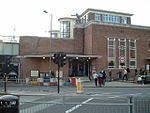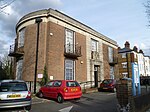Bobath Centre

The National Bobath Cerebral Palsy Centre (The Bobath Centre) is the original home of the Bobath Approach, providing therapy to those living with cerebral palsy and similar neurological conditions. Its services are available to people of all ages The Bobath Centre is also a specialist, national training facility for health professionals and therapists. Physiotherapy, Occupational Therapy and Speech and Language Therapy, specifically. History: The Bobath Centre was founded by husband and wife partnership Berta Bobath and Dr Karel Bobath who developed the Bobath concept Originally, The Bobath Centre was located in East End Road, East Finchley, a grade II listed building with Historic England. The buildings occupied by the centre were the former Holy Trinity School designed by Anthony Salvin, who also designed Holy Trinity East Finchley, and the former Industrial School. The construction of the original school was funded by the Salvin family and their friends, including Lord Mansfield of Kenwood.
Excerpt from the Wikipedia article Bobath Centre (License: CC BY-SA 3.0, Authors, Images).Bobath Centre
East End Road, London Finchley (London Borough of Barnet)
Geographical coordinates (GPS) Address Nearby Places Show on map
Geographical coordinates (GPS)
| Latitude | Longitude |
|---|---|
| N 51.5895 ° | E -0.1653 ° |
Address
East End Road
East End Road
N2 8AX London, Finchley (London Borough of Barnet)
England, United Kingdom
Open on Google Maps











